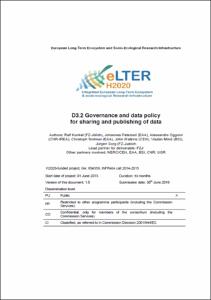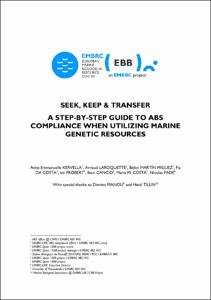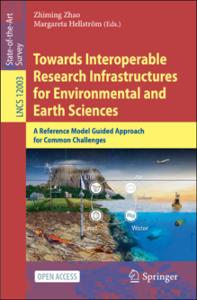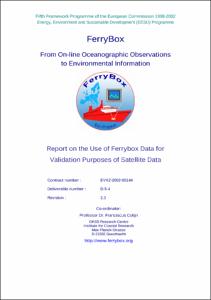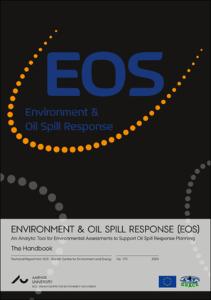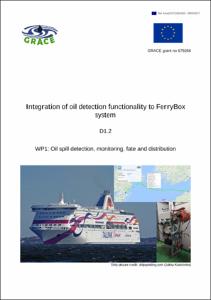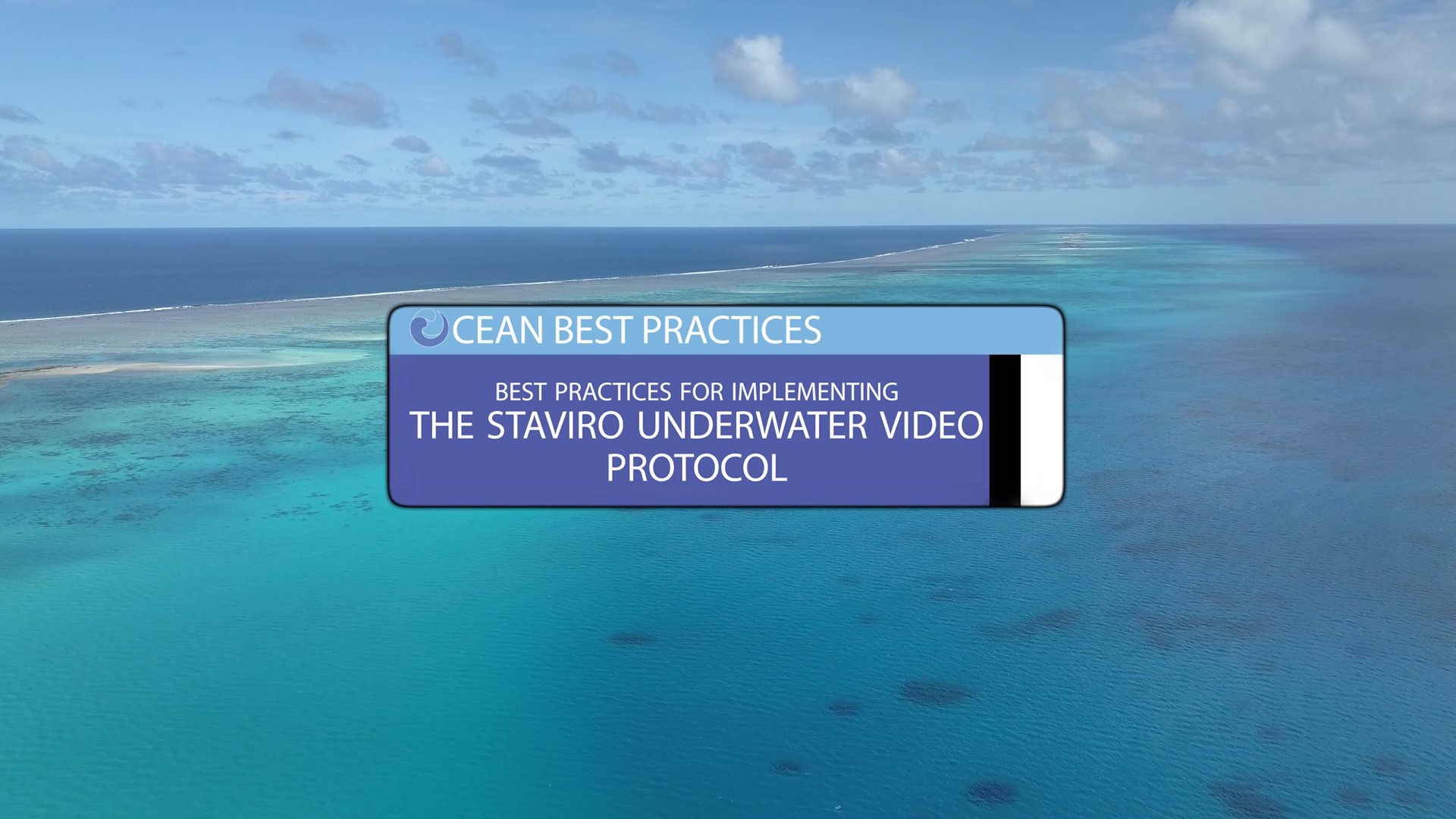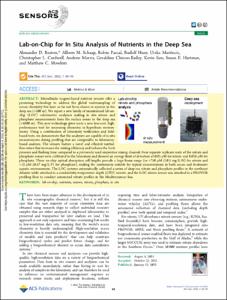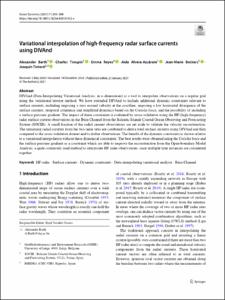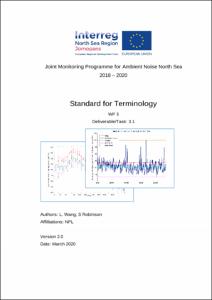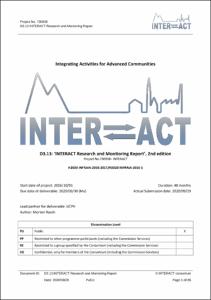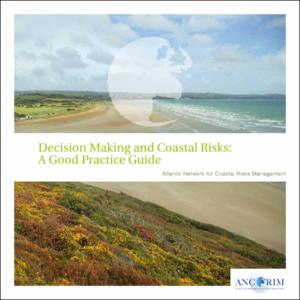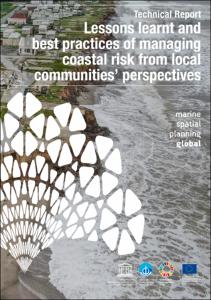European Union Funded Practices: Recent submissions
Now showing items 41-60 of 116
-
Final recommendations on Best Practices and common Standards for RI business planning. (D5.4).
(Swiss National Science Foundation for InRoad Project,, Bern, Switzerland, 2018)This report proposes recommendations on business planning for RIs, and evaluation of busi-ness plans in view of RI roadmapping and funding. Targeted at RI managers and policy-makers, such as funding organisations, the ... -
Good practices and common trends of national research infrastructure roadmapping procedures and evaluation mechanisms (InRoad deliverable D3.3).
(Swiss National Science Foundation for InRoad Project,, Bern, Switzerland, 2018)The InRoad Deliverable 3.3 describes and analyses national research infrastructure roadmapping procedures, as well as evaluations and monitoring processes in Europe. For this purpose, four case studies (Finland, Netherlands, ... -
European Long-Term Ecosystem and Socio-Ecological Research Infrastructure, D3.2 Governance and data policy for sharing and publishing of data.
(European Long-Term Ecosystem and Socio-Ecological Research Infrastructure (eLTER), 2019)The site network of LTER Europe provides an important source of data for the assessment and understanding of ecosystem processes and their relation to environmental pressures and threats. LTER is organised by different ... -
Seek, keep and transfer: a step-by-step guide to ABS Compliance when utilizing marine genetic resources.
(European Marine Biological Resource Centre/European Blue Biobank, Paris, France, 2021)This guide is delivered by the EBB (European Blue Biobank) project11 with support of the European Marine Biological Resource Centre (EMBRC-ERIC) ABS Working-Group. This guide is a to-do-list to assist public and private ... -
Towards Interoperable Research Infrastructures for Environmental and Earth Sciences: A Reference Model Guided Approach for Common Challenges.
(Springer, Cham, Switzerland, 2020)This book summarises the latest developments on data management in the EU H2020 ENVRIplus project, which brought together more than 20 environmental and Earth science research infrastructures into a single community. It ... -
The EMBRC Guide to ABS Compliance: Recommendations to Marine Biological Resources, Collections’ and Users’ Institutions. D5.1.
(European Marine Biological Resource Centre, Paris, Frnce, 2020)The EMBRC handbook presents a set of guidelines and recommendations to collections and users of genetic resources to familiarize and adopt best practices to comply with the ABS framework. Collections and biobanks holding ... -
Report on the use of Ferrybox data for validation purposes of satellite data. Deliverable D5.4, Revision 2.0.
(GKSS Research Centre, Institute for Coastal Research for European FerryBox Project Consortium, Geesthacht, Germany, 2007)In this report we give detailed comparisons of FerryBox measurements with satellite data for 6 of the FerryBox systems and demonstrate the value of these data for satellite validation -
Environment and Oil Spill Response (EOS) - an analytic tool for environmental assessment to support oil spill response planning.
(Aarhus University, Aarhus, Denmark, 2020)The EOS is a desktop analysis based on oil spill scenarios and published as well as expert knowledge on the environment in the assessment area. The EOS tool can support decisions of inclusion of mechanical recovery, in ... -
Environment and Oil Spill Response (EOS) : an Analytic Tool for Environmental Assessments to Support Oil Spill Response Planning. The Handbook.
(Aarhus University, Danish Centre for Environment and Energy, Aarhus, Denmark, 2020)The EOS is a desktop analysis based on oil spill scenarios and published as well as expert knowledge on the environment in the assessment area. The EOS tool can support decisions of inclusion of mechanical recovery, in ... -
Integration of oil detection functionality to FerryBox system. GRACE WP1, D1.2. Verson 1.2.
(Finnish Environment Institute (SYKE) for GRACE Project, 2017)Our knowledge of the ocean is limited by our observational ability. To better understand and manage the oceans and the coastal systems, there is a clear need for environmental data of higher spatial and temporal resolution. ... -
OceanGliders Oxygen SOP v1.0.0. [GOOS ENDORSED PRACTICE]
(OceanGliders, 2022)This standard operating procedure (SOP) document for dissolved oxygen (DO) aims to guide the user through the steps necessary to collect good quality dissolved oxygen data using ocean gliders for both real time and post ... -
Best practices for implementing the STAVIRO underwater video protocol. [VIDEO]
(French Institute for the Exploitation of the Sea (Ifremer) and Oceans.mov and Ocean Best Practices System, Brest, France, 2022)Essential Biodiversity variables (EBV) related to benthic habitats and high trophic levels such as fish communities must be measured at fine scale but monitored and assessed at spatial scales that are relevant for policy ... -
Identification of new and cross-cutting technologies and solutions to boost blue growth.
(JPI Oceans, Belgium, 2014)The Europe 2020 strategy clearly signalled the importance of industrial competitiveness for growth and jobs as well as for Europe’s ability to address societal challenges. In this context, mastering and deploying "enabling ... -
Lab-on-Chip for In Situ Analysis of Nutrients in the Deep Sea.
(2022)Microfluidic reagent-based nutrient sensors offer a promising technology to address the global undersampling of ocean chemistry but have so far not been shown to operate in the deep sea (>200 m). We report a new family ... -
Variational interpolation of high-frequency radar surface currents using DIVAnd.
(2021)DIVAnd (Data-Interpolating Variational Analysis, in n-dimensions) is a tool to interpolate observations on a regular grid using the variational inverse method. We have extended DIVAnd to include additional dynamic constraints ... -
Developing Zoo & Phytoplankton EOV Products in Blue-Cloud.
(Flanders Marine Institute (VLIZ) for Blue Cloud Project, Oostende, Belgium, 2021)The Zoo and Phytoplankton EOV Products demonstrator is developed by the Flanders Marine Institute (VLIZ), in collaboration with the Faculty of Science and Engineering at Sorbonne University and GeoHydrodynamics and ... -
JOMOPANS standard: Terminology for ambient ocean noise monitoring.
(Joint Monitoring Programme for Ambient Noise North Sea (JOMOPANS), 2020)The aim of this project is to develop a framework for a fully operational joint monitoring programme for ambient noise in the North Sea. Output will be the tools necessary for managers, planners and other stakeholders to ... -
INTERACT Research and Monitoring Report 2020. D3.13. 2nd edition
(INTERACT Consortium, 2020)The Arctic is still an understudied part of the world, and restricted access or lack of infrastructure makes arctic research more complicated than elsewhere. Coordinating activities, implementing standards and data ... -
Decision Making and Coastal Risks: A Good Practice Guide.
(Atlantic Network for Coastal Risks Management, 2017)The objective of this handbook is to provide a Good Practice Guide to facilitate the inclusion of coastal risk into decisions made in the coastal zone. This handbook is aimed at those involved in coastal planning and ... -
Lessons learnt and best practices of managing coastal risk from local communities’ perspectives.
(UNESCO-IOC, Paris, France, 2021)The objective here is to present how various hazards affecting coastal areas impact the local communities in selected countries, and how these matters are being managed by national, regional and local governmental in ...
 Repository of community practices in Ocean Research, Applications and Data/Information Management
Repository of community practices in Ocean Research, Applications and Data/Information Management


